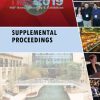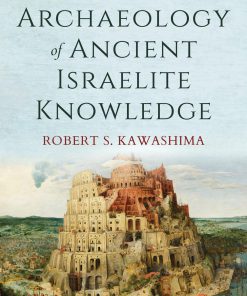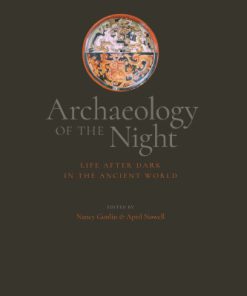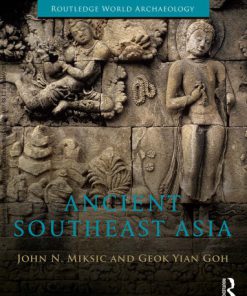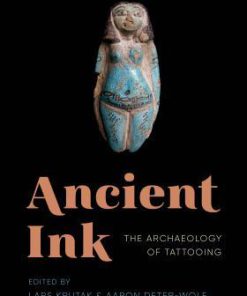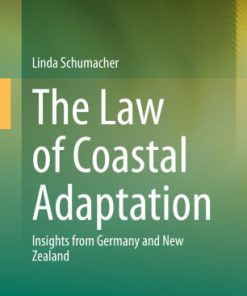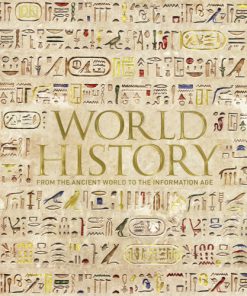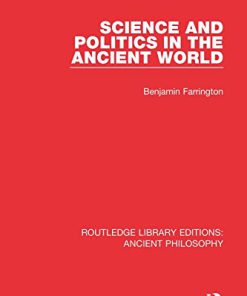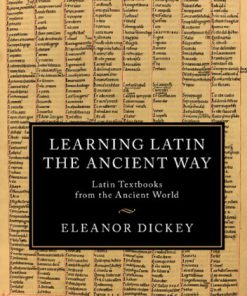The Ancient Nasca World New Insights from Science and Archaeology 1st Edition by Rosa Lasaponara, Nicola Masini, Giuseppe Orefici 3319470528 9783319470528
$50.00 Original price was: $50.00.$25.00Current price is: $25.00.
The Ancient Nasca World New Insights from Science and Archaeology 1st Edition by Rosa Lasaponara, Nicola Masini, Giuseppe Orefici – Ebook PDF Instant Download/DeliveryISBN: 3319470528, 9783319470528
Full download The Ancient Nasca World New Insights from Science and Archaeology 1st Edition after payment.
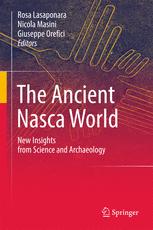
Product details:
ISBN-10 : 3319470528
ISBN-13 : 9783319470528
Author: Rosa Lasaponara, Nicola Masini, Giuseppe Orefici
This book presents outstanding chapter contributions on the Nasca culture in a variety of artistic expressions such as architecture, geoglyphs, ceramics, music, and textiles. The approach, based on the integration of science with archaeology and anthropology, sheds new light on the Nasca civilization. In particular the multidisciplinary character of the contributions and earth observation technologies provide new information on geoglyphs, the monumental ceremonial architecture of Cahuachi, and the adaptation strategies in the Nasca desert by means of sophisticated and effective aqueduct systems. Finally, archaeological looting and vandalism are covered. This book will be of interest to students, archaeologists, historians, scholars of Andean civilizations, scientists in physical anthropology, remote sensing, geophysics, and cultural heritage management.
The Ancient Nasca World New Insights from Science and Archaeology 1st Table of contents:
1 Thirty Years of Investigations in Nasca: From Proyecto Nasca to the ITACA Mission
Abstract
1.1 Introduction
1.2 Objectives and Results of the Research
1.3 Cahuachi
1.4 Estaquería
1.5 Strategies and Technologies for the Conservation and Enhancement of the Ceremonial Center of Cah
1.6 Collaboration with the ITACA Mission
Acknowledgments
References
2 The Nasca Area and Its Environment
Abstract
2.1 The Río Grande de Nasca Drainage Basin
2.1.1 Hydrological Resources and Water Regime
2.1.2 Ecology and Different Ecosystems. Effects of the Humboldt Current
2.1.3 Marine and Land Resources
2.2 Subsistence Economy and the Dynamics of Settlements in Coastal Southern Peru
2.2.1 The Emergence of Complex Society in the Late Preceramic Period
References
3 The Geology of Cahuachi
Abstract
3.1 Introduction
3.2 Physical Framework
3.3 Regional Geological Framework
3.4 Geological Hazards
3.5 Field Survey
3.6 Correlations and Interpretations
3.7 Conclusion
References
4 Nasca Historical and Cultural Analysis
Abstract
4.1 First Organized Societies on the Southern Coast of Peru
4.1.1 Settlements of the Late Preceramic Period
4.1.2 Development of Urbanism Between the Initial Period and Early Horizon
4.2 Development of the Paracas Culture
4.2.1 Paracas Chronology by Julio C. Tello
4.3 The Paracas Antecedents to Nasca in the Río Grande de Nasca Drainage
4.3.1 Ceramics Between Late Horizon and Early Intermediate Period
4.3.2 Cahuachi and Its Area of Influence
References
5 Anthropology and Bio-cultural Adaptation of the Ancient Nasca Inhabitants
Abstract
5.1 Introduction
5.2 Paleodemography
5.3 Morphological and Metric Characteristics
References
6 The Role of Plants in the Nasca Culture
Abstract
6.1 Introduction
6.2 Agriculture
6.3 Vegetable Foods
6.4 Healing and Magical Plants
6.5 Final Remarks
References
7 The Paracas–Nasca Cultural Sequence
Abstract
7.1 Introduction: Paracas Culture. Relative and Absolute Chronology
7.2 Paracas Evidence at Cahuachi
7.3 Cultural Evolution in the South-Central Coast and in the Río Grande de Nasca Drainage
7.4 Nasca Culture. Economic and Socio-political Organization
7.5 Nasca Pottery Seriation
7.6 Economic Resources and Specialization of Production Activities
References
8 Religion in Nasca Culture
Abstract
8.1 The Supernatural World of the Nasca People
8.2 The Mythical Gods of the Paracas and Nasca People
8.3 The Sacredness of the Natural World
8.4 Rituals and Ceremonies
References
9 The Functions and Distribution of Space in the Urban and Religious Centers of the Río Nasca Valle
Abstract
9.1 Introduction
9.2 Use of Space in Various Architectural Groups
9.3 Typology and Use of the Architectural Structures in the Various Settlements
References
10 Petroglyphic Images and the Sacred Valleys
Abstract
10.1 Introduction
10.2 Nasca Project: Studies of the Rock Art in the Nasca and Palpa Areas
10.3 Chichitara
10.4 Petroglyphs in the Las Trancas and Río Aja Valleys
10.5 Other Rock-Art Stations in the Valleys of Río Grande de Nasca Drainage
References
11 Nasca Geoglyphs: Technical Aspects and Overview of Studies and Interpretations
Abstract
11.1 Introduction
11.2 Notes on Technical Aspects of the Geoglyphs
11.3 Dating Approaches
11.4 Interpreting the Nasca Lines: From the Spaniard Chroniclers to the Most Recent Investigations
11.5 Conclusion
References
12 Cahuachi and Pampa de Atarco: Towards Greater Comprehension of Nasca Geoglyphs
Abstract
12.1 Introduction
12.2 Cahuachi and the Geoglyphs
12.3 Pampa de Atarco: The Geoglyphs of Cahuachi
12.3.1 Methodology
12.3.1.1 Remote Sensing and Ground Truth
12.3.1.2 GIS-Based Analyses for Archaeology
12.3.2 Patterns and Morphological Features: First Interpretive Hypothesis
12.4 Final Remarks
Acknowledgments
References
13 Puquios: The Nasca Response to Water Shortage
Abstract
13.1 Introduction
13.2 The Nasca and Water
13.3 Study Area: Hydrology and Land Use
13.4 Brief Notes on the Puquio Technology
13.5 Dating Issues
13.5.1 Early Different Hypothesis
13.5.2 Laboratory Dating
13.5.3 Archaeological Evidence: Settlements and Artefacts
13.6 A Space View of the Puquios
13.6.1 Characterization of the Environmental Setting Based on Satellite Data
13.6.2 Space View of the River Flow in the Nasca Region
13.7 An Overview of Functioning and Disused Puquios
13.7.1 The Irrigation Sector of the Nasca River
13.7.2 The Irrigation Sector of the Aja and Tierra Blancas Rivers
13.7.3 The Irrigation Sector of the Taruga River
13.7.4 The Irrigation Sector of Las Trancas
13.8 Current Status and Management of Nasca Filtration Galleries
13.9 Final Remarks
References
14 The Ceremonial Center of Cahuachi: Its Origins and Evolution
Abstract
14.1 The Early Origin of Cahuachi
14.2 Cahuachi as Huaca
14.3 Early Architectural Forms in Cahuachi
14.4 First Architectural Phase in Cahuachi
14.5 Cahuachi as Religious Capital, Political Core and Multifunctional Center
14.6 The Control of Water and Agricultural Production
14.7 Conclusions
References
15 Cahuachi Architecture
Abstract
15.1 Morphological Analysis and Orientation of Architectural Structures. Construction Phases
15.2 Construction Techniques, Spatial Organization, and Ceremonial Enclosures
15.3 Access Ramps and Connecting Stairs
15.4 Artificial Fillings
15.5 Floors, Roofing Systems and Colonnades
References
16 Recent Discoveries in Cahuachi: The Templo Sur
Abstract
16.1 The Imposing Structure of the Templo Sur
16.2 The Construction Phases of the Templo Sur
16.3 Spatial Organization and Function of Architectural Features
Reference
17 Nasca Antaras and Whistles: A Musicological Study
Abstract
17.1 Introduction
17.2 The Antara
17.2.1 The Making of the Instruments
17.2.2 Performance Practice—the Instrument
17.2.3 Performance Practice—the Musician
17.3 The Whistle
17.4 Conclusions
References
18 Cahuachi and the Paracas Peninsula: Identifying Nasca Textiles at the Necropolis of Wari Kayan
Abstract
18.1 Three Textiles and an Olla
18.2 The Black Mantle
18.3 The Red Mantle
18.4 The Knotted Openwork
18.5 Bases for Comparison
18.6 The Embroideries from the Necropolis of Wari Kayan, Paracas Peninsula
18.6.1 Bundle 38
18.6.2 Bundle 253
18.6.3 Bundle 319
18.6.4 Bundle 451
18.6.5 Bundle 89
18.6.6 Bundle 378
18.6.7 Bundle 310
18.6.8 Bundle 298
18.7 Discussion
18.7.1 Beans and Severed Heads
18.7.2 Signs, Cycles, and Syntax in Nasca Textiles
18.8 Conclusions
Acknowledgments
References
19 The Decline of Cahuachi and the End of the Nasca Theocracy
Abstract
19.1 Evidence of Anomalous Events Within the Temple Buildings
19.2 The Spatial Reorganization During the Phase IV of the Construction of Cahuachi
19.3 The Importance of Climatic Anomalies and Seismic Phenomena in the Social and Ideological Crisis
19.4 Social Restructuration in the Final Stages of Cultural Evolution of the Nasca Society. The Role
20 Remote Sensing and Geophysics for the Study of the Human Past in the Nasca Drainage
Abstract
20.1 Introduction
20.2 Context, Study Areas, and Aims
20.2.1 Cahuachi: Brief Historical and Archaeological Overviews
20.2.2 Paredones
20.2.3 Archaeological and Research Issues Addressed by the ITACA Mission
20.3 Rational Basis of Archaeogeophysics
20.3.1 Satellite Dataset
20.3.2 Satellite Image-Processing Approach
20.3.2.1 Feature Enhancement Based on Pan-Sharpening Techniques
20.3.2.2 Feature Enhancement Based on Linear Combinations of Spectral Bands
20.3.2.3 Feature Enhancement Based on Spatial Filtering
20.3.2.4 Geostatistic Approach
20.3.3 Aerial Photogrammetry by Means of Structure from Motion
20.3.4 Geophysical Approach
20.3.4.1 GPR Method
20.3.4.2 Geomagnetic Prospecting
20.3.4.3 Geoelectrical Method
20.4 Remote-Sensing-Based and Geophysical Investigations: Approach and Results
20.4.1 VHR Satellite Image Processing: Approach Devised for the Arid Surfaces of Cahuachi
20.4.1.1 Site 1: Sector B of Cahuachi
20.4.1.2 Site 2: Geoglyphs of Pampa de Atarco Cahuachi
20.4.1.3 Feature Enhancement of Satellite Images Including Biomorphic Geoglyphs
20.4.2 Archaeo-Geophysical Investigations and Results in Sector A
20.4.2.1 Site S3. from Satellite to Geophysics: The Discoveries in Piramide Naranja
20.4.2.2 Site S4: Templo Del Escalonado
20.4.2.3 Site S5: Pyramide Sur
Bottom of Templo Sur
Top of Templo Sur
Slope of Templo Sur: Discovery of the Pyramid
Site S6: The Top of Great Pyramid
20.4.2.4 Remote-Sensing Approach for Site Detection in Vegetated Areas: Site S7 in the Nasca Riverbe
20.4.2.5 Paredones
20.4.3 Conclusions
Acknowledgments
References
21 Satellite SAR Remote Sensing in Nasca
Abstract
21.1 SAR in Nasca
21.2 SAR Input Data and Processing
21.3 Regional-Scale Environmental Assessment
21.3.1 Land Use and Soil-Moisture Changes
21.3.2 Monitoring Landforms and Mass Movements
21.4 From Natural Environment to Anthropogenic Features
21.4.1 (Re-)Discovering Ancient Water Systems: Puquios of Nasca
21.4.2 Delineating Subtle Features: Geoglyphs of Nasca
21.5 Protection of Archaeological Heritage: Looting in Cahuachi
21.6 Concluding Remarks
Acknowledgments
References
22 Puquios: New Insights from the Integration of Remote Sensing, GIS-Based Analyses and Geophysical
Abstract
22.1 Introduction
22.2 Remote Sensing: Rationale and Results
22.2.1 Rationale
22.2.2 Data Processing
22.2.2.1 Results: Multitemporal Characterization of the Fluvial Oasis
22.2.2.2 Arable-Land Extraction
22.2.2.3 Satellite-Based Characterization of the Rivers: From Surface Flow to the Underground Drop P
22.3 GIS-Based Analysis for Archaeology: Rationale and Results
22.3.1 Rationale
22.3.2 Method: Kernel Density Estimation
22.3.3 Relationships Between Archaeological Sites and the Puquios
22.4 Río Taruga Valley: The Contribution of Geophysical Prospecting
22.4.1 Geophysical-Data Analysis and Interpretation
22.5 Detecting Lost and Abandoned Puquios Using High-Resolution Satellite Imagery
22.6 Conclusion
References
23 Geomatics Applications in Cahuachi and Nasca Territory
Abstract
23.1 Introduction
23.2 GNSS Surveying
23.3 Remote Sensing and Digital Terrain Modelling
23.4 Close-Range Photogrammetry
23.5 Conclusions
References
24 The Polychromy of Nasca Pottery: A Nondestructive Analytical Approach for Compositional and Miner
Abstract
24.1 Introduction
24.2 LNS-IBAM Noninvasive Instruments and Methods for Compositional and Mineralogical Investigation
24.3 Some Considerations About Nasca Polychrome Pottery
24.4 Quantitative Results of the Composition of the Analyzed Pigments
24.4.1 Black-Pigments Analysis
24.4.2 White-Pigment Analysis
24.5 Conclusions
Acknowledgments
References
25 Combating Illegal Excavations in Cahuachi: Ancient Problems and Modern Technologies
Abstract
25.1 Introduction
25.2 Archaeological Looting in Cahuachi
25.3 Aerial and Satellite Tools for Monitoring and Quantification of Looting
25.4 Remote-Sensing-Based Approach in the Nasca Drainage
25.5 Satellite Data Processing and Results
25.6 Estimation of Looting Damage Using UAV, GPS Survey, and GPR
25.6.1 High-Resolution Aerial Survey
25.6.2 Global Positioning System
25.6.3 Ground-Penetrating Radar
25.7 Final Remarks
Acknowledgments
References
26 Nasca Lines: Space Tracking of Vandalism
Abstract
26.1 Introduction
26.2 Protection of Nasca Lines: Brief History and Regulations
26.3 Satellites to Focus on the Nasca Lines
26.4 Protection and Monitoring of Geoglyphs: Remote Sensing Perspectives for Operational Use
26.4.1 Analysis of the State of Conservation
26.4.2 Change Detection and Assessment of Damage
26.5 Conclusions and Future Perspectives
People also search for The Ancient Nasca World New Insights from Science and Archaeology 1st:
the nazca civilization
the nazca culture
the nazca lines national geographic
the nazca are most famous for
the nazca empire
Tags: The Ancient, Nasca World, Science, Archaeology, Rosa Lasaponara, Nicola Masini, Giuseppe Orefici
You may also like…
Science (General)
Religion & Spirituality - Bible
The Archaeology of Ancient Israelite Knowledge 1st Edition Robert S. Kawashima
Politics & Philosophy - Social Sciences
Archaeology Of The Night Life After Dark In The Ancient World Nancy Gonlin
History - Asian History
Ancient Southeast Asia 2016 ROUTLEDGE WORLD ARCHAEOLOGY John N. Miksic Andh Geok Yian Goh
Science (General)
History - World History
World History: From the Ancient World to the Information Age Parker
Politics & Philosophy - Anthropology
Languages - General & Miscellaneous Languages - Reference
Learning Latin the ancient way Latin textbooks from the ancient world Dickey


